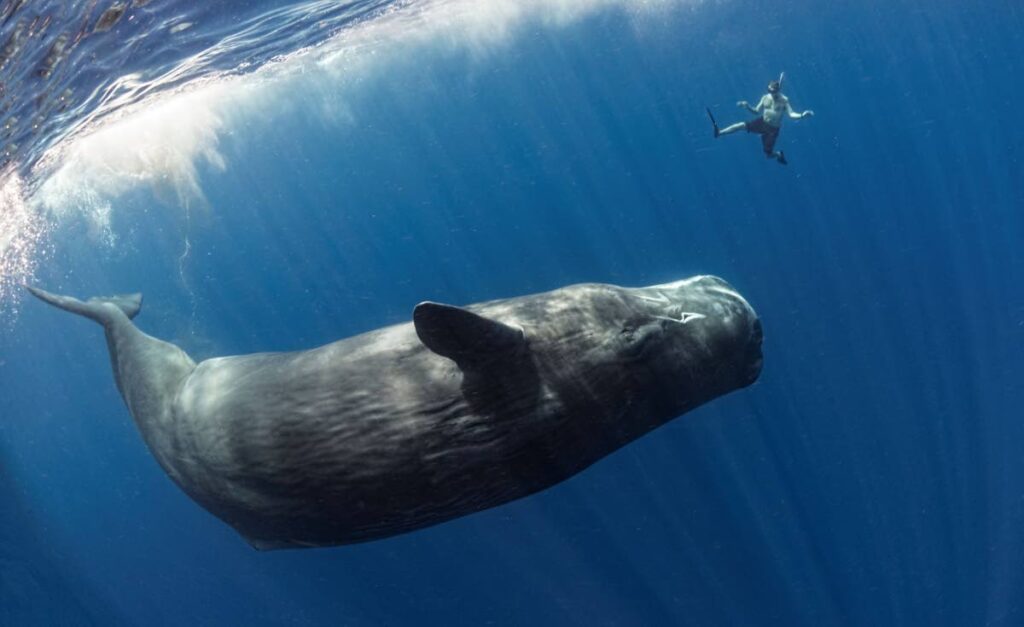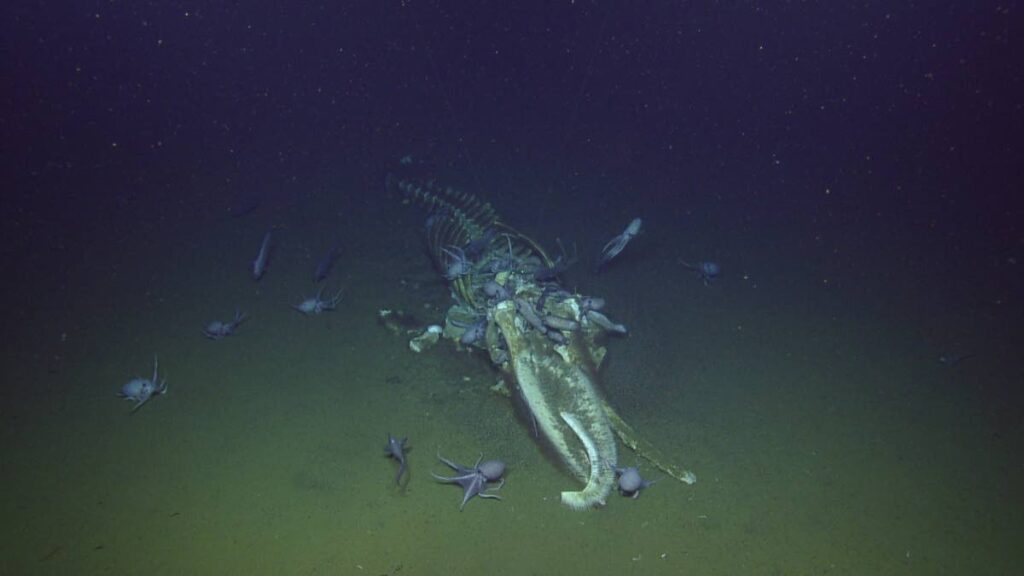Feeding the deep ocean

Dr Anjani Ganase, marine ecologist, considers the natural progression of a dead whale in the ocean. Scientists are discovering that the impacts of “whale falls” continue for decades and even centuries.
The sun supports all life on our planet – well, nearly all life.
Animals depend on plants to create food through photosynthesis (the process by which plants harness sunlight and water to create sugar).
Plant life is the foundation of the global food web. Consider that 70 per cent of the planet is ocean, and 90 per cent of the ocean is deep ocean, which is deeper than 1,000 metres (the average depth of the ocean is more than 3,600 metres). Any ocean beyond 1,000 metres deep is beyond the penetration of sunlight, and photosynthesis does not occur at depths below 200 metres.
Does the sun support life, even in the deepest darkest part of our oceans?
Life in the deep seas persists. In such a nutrient desert, life exists as a result of several adaptations, including having low metabolism, gulping and feeding on almost anything and, of course, not wasting energy on visual aesthetics.
The food chain of the deep ocean is driven instead by chemosynthesis, in which microbes use chemicals emitted by hydrothermal vents and cold seeps to generate food, which are then consumed by other deep-sea grazers, such as crabs and shrimp.
Despite the contribution of food through chemosynthesis, a large portion of the deep-sea dwellers rely on fallen debris from the nutrient-rich sunlit areas of the ocean. When organisms die in the ocean, they are quickly consumed by surrounding organisms, and whatever is left breaks down into particles of detritus and drifts to the bottom of the ocean as marine snow. Deep-ocean residents graze on this food source on the sediment bottom of the ocean.
Scientists through their explorations found that sometimes even big animals sink to the bottom of the ocean, providing a sudden delivery of a nutrient-rich source, and the organisms share in a feast.
Whale falls occur when a whale carcass sinks to the bottom of the ocean, creating a nutrient-rich energy source. Whale carcasses may float for a while, allowing sharks and other predators to satisfy their hunger, but eventually the whale sinks to the bottom. A 40-ton whale carcass can provide an equivalent of 200 years of food from marine snow. It is a very rich energy source that supports deep-sea communities for decades and forms an island oasis at the ocean floor.

While natural whale falls are rarely encountered, about 22 falls are observed globally (many are intentional sinks for research purposes). These have been observed in the northern Pacific Ocean, Antarctica and Southern Atlantic Ocean. They provide key insights into the deep-sea biodiversity and food web.
Scientists of Ocean Networks Canada (ONC) have the rare opportunity to revisit a whale fall site adjacent to where they deployed seafloor observatory instrumentation. Revisiting their instruments has allowed annual visits of the whale-fall sites to track the changes in the whale-fall community over time.
The whale fall site is 1,250 metres deep at the Cascadia subduction zone. It was first observed in 2009, then revisited in 2012, 2020 and 2023. At first discovery, the species of whale could not be identified, but senior scientist Fabio De Leo speculated that it may be a grey whale, as the location overlaps with grey-whale migratory pathways.
Observations of the carcass in 2023 found that the community of feeders included snails, crabs, fish, isopods and tube worms – likely the same tube worms that had been feeding on the whale bones 14 years before.
Four phases of feeders
General research on whale falls has identified four main phases in the community succession of feeders.
The first phase is the mobile scavenger phase, where the dead carcass draws scavengers from far and wide that swim to the carcass to feed en masse on the soft tissue of the whales. Within hours of the whale’s arrival, hagfish burrow into the tissue of the whale; sleeper sharks, over seven metres in length, gnaw on flesh and strip the carcass to the bone. The scavenger phase can last from a few months up to two years.
The second phase includes enrichment opportunities provided by the scavengers. Debris from the whale settles on the sediment and allows smaller organisms and the bacterial community to feed. These tiny fauna can feed on the fallen nutrients for over a year.
The third phase is the sulphophilic stage, in which chemicals generated in sediment from the whale skeleton allow anaerobic microbes to build a chemosynthetic bacteria community. These communities can persist over 50 years in this phase.

The last phase is the reef phase, in which the whale bones provide solid structure to the remaining detritivore and bacterial communities, and other benthic organisms are recruited to the new habitat, which provides support for centuries.
While whales probably provide the largest influx of nutrients from the surface to the deep ocean, scientists have found fish falls and shark falls that support communities for months.
Given that whale populations have significantly declined during the history of mankind, we have to wonder how much our impacts on whales and other large marine-fauna populations may have affected nutrient influx to deep-sea communities that opportunistically thrive on the whale falls.
We have little idea how diminishing populations of whales affect the broader deep-sea food web.
We do know that our world is connected intimately in many ways. And this should give us pause in our ongoing pursuit of more food, more resources, more consumption.

Comments
"Feeding the deep ocean"